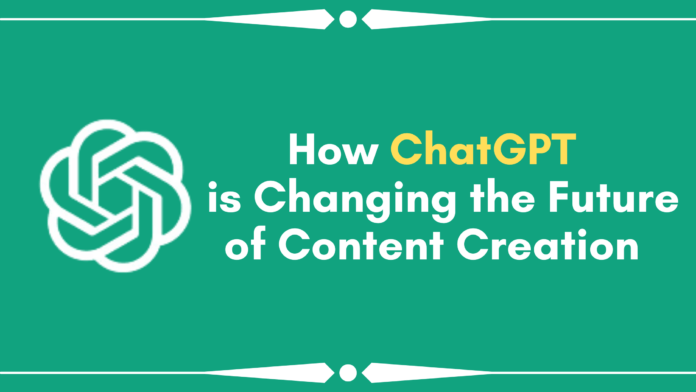ChatGPT is a powerful natural language processing (NLP) model developed by OpenAI, a leading artificial intelligence research laboratory. This model is capable of generating human-like text based on the input it receives, making it one of the most advanced NLP models in the world.
ChatGPT was trained on a massive dataset of text from the internet, including websites, blogs, books, and other sources. The model uses a deep learning approach called transformer architecture, which is designed to process sequential data. This makes it well-suited for tasks such as language translation, text classification, and text generation, among others.
Features of chat GPT:

ChatGPT is an advanced natural language processing (NLP) model developed by OpenAI that offers a range of features and capabilities. Some of the exciting features of ChatGPT are:
- Generating human-like text: ChatGPT is capable of generating text that is grammatically correct and reads like it was written by a human. The model uses a combination of rules and statistical models to generate text, which allows it to produce text that is both human-like and informative.
- Multiple language support: ChatGPT can be used to generate text in a variety of languages, including English, Spanish, French, German, and more. This makes it a valuable tool for businesses and individuals who need to generate text in multiple languages.
- Chatbot functionality: One of the most exciting applications of ChatGPT is in the field of chatbots. The model can be used to build chatbots that are capable of understanding user requests and generating appropriate responses. This can be particularly useful for customer service and support, as chatbots can handle a large number of requests simultaneously and provide quick and accurate responses.
- Content creation: ChatGPT can be used to generate articles, blog posts, and other forms of text. For example, it can be used to generate summaries of news articles or to generate product descriptions for e-commerce websites. This can save time and effort for content creators, as they can rely on the model to generate text quickly and accurately.
- Customization: ChatGPT can be fine-tuned to meet the specific needs of a business or individual. For example, the model can be trained on a specific dataset to improve its performance in a specific domain. This allows businesses and individuals to tailor the model to meet their specific needs and requirements.
- Scalability: ChatGPT is designed to scale to meet the demands of large-scale applications. The model can process large volumes of text data, making it well-suited for applications such as language translation and text classification.
- Integration with other tools: ChatGPT can be integrated with a range of other tools and technologies, including APIs, chat platforms, and more. This allows businesses and individuals to leverage the power of the model in a variety of applications and use cases.
- Bias control: OpenAI has implemented a number of measures to ensure that the model’s output is high-quality and free from bias. This is particularly important in applications such as chatbots, where the output can have a significant impact on the user experience.
ChatGPT offers a range of features and capabilities that make it a valuable tool for businesses and individuals. Whether you need to generate human-like text, build a chatbot, or create content, ChatGPT can help you achieve your goals. The model’s ability to generate high-quality text, support multiple languages, and be fine-tuned to meet specific needs, make it a powerful tool for businesses and individuals alike.
One of the exciting advantages of ChatGPT is its ability to generate correct and grammatically accurate text. The model uses a combination of rules and statistical models to generate text, which allows it to produce text that is both human-like and informative. The model can generate text in a variety of styles, from formal and academic to casual and conversational, depending on the input it receives.
One of the key advantages of ChatGPT is in the field of chatbots. Chatbots are computer programs that can converse with users in natural language. ChatGPT can be used to build chatbots that are capable of understanding user requests and generating appropriate responses. This can be particularly useful for customer service and support, as chatbots can handle a large number of requests simultaneously and provide quick and accurate responses.
ChatGPT is also useful in content creation. The application can be used to generate text content such as articles and blog posts. For example, it can be used to generate summaries of news articles or to generate product descriptions for e-commerce websites. This can save time and effort for content creators, as they can rely on the model to generate text quickly and accurately.
One of the challenges in using NLP models like ChatGPT is controlling the quality and bias of the output. While the model is capable of generating high-quality text, it can also generate text that is offensive or biased. This is because the model has been trained on a large dataset of text from the internet, which can include biased or offensive content. To mitigate this, OpenAI has implemented a number of measures to ensure that the model’s output is high-quality and free from bias.
GPT Chat Disadvantages
ChatGPT, or Generative Pretrained Transformer 3, is a state-of-the-art language model developed by OpenAI, but like all language models, it has certain disadvantages.
One major disadvantage of ChatGPT is
Limited understanding of context: Its lack of context awareness. Unlike humans, ChatGPT does not have the ability to understand the context of a conversation and as a result, it may generate irrelevant or nonsensical responses. This lack of context awareness can lead to confusion and misunderstandings, particularly in more complex conversational exchanges.
Potential for bias: ChatGPT has a tendency to generate biased responses. Since the model was trained on a large corpus of text data from the internet, it may reflect the biases present in that data. For example, it may generate sexist or racist responses, or perpetuate stereotypes and misinformation.
Lack of creativity: While ChatGPT can generate text based on patterns it has learned from data, it cannot truly create anything new or original on its own. It lacks the creativity and critical thinking skills and empathy that human writers possess. As a result, its responses can sometimes come across as mechanical and lacking in emotional intelligence.
Need for human supervision: ChatGPT requires human oversight to ensure the accuracy, relevance, and appropriateness of its output. Without this, it can generate misleading or inappropriate text.
Inability to replicate human voice: While ChatGPT can mimic certain writing styles and tones, it cannot truly replicate the unique voice and personality of individual writers.
Additionally, ChatGPT can be easily deceived by providing it with false information or misleading questions. This can lead to incorrect answers and spread misinformation, which is a major concern in today’s world where fake news and misinformation are prevalent.
While ChatGPT is a powerful language model, it has several disadvantages that limit its effectiveness in certain situations and make it important to use it with caution and skepticism.
Despite these challenges, the potential benefits of ChatGPT are significant. The model can revolutionize the way we interact with technology, making it easier and more natural to communicate with computers. It can also help businesses automate tasks and reduce the time and effort required to generate content.
Will chatGpt Replace human writers?
No, ChatGPT is a language model designed to assist human writers, not to replace them. While it can generate text based on patterns it has learned from vast amounts of data, it lacks the creativity, originality, and critical thinking skills that human writers possess. Moreover, ChatGPT requires human supervision to ensure the accuracy, relevance, and appropriateness of its output, and it cannot replicate the unique voice and style of individual writers. Ultimately, human writers bring a level of nuance, empathy, and personal touch that ChatGPT cannot replicate.
conclusion
In conclusion, ChatGPT is a powerful NLP model developed by OpenAI that can be used for a variety of applications, including chatbots, content creation, and language processing. The model’s ability to generate high-quality text based on input makes it a valuable tool for businesses and individuals alike. While there are challenges in using the model, its potential benefits are significant, and it is likely to play an important role in the development of natural language technology in the coming years.
